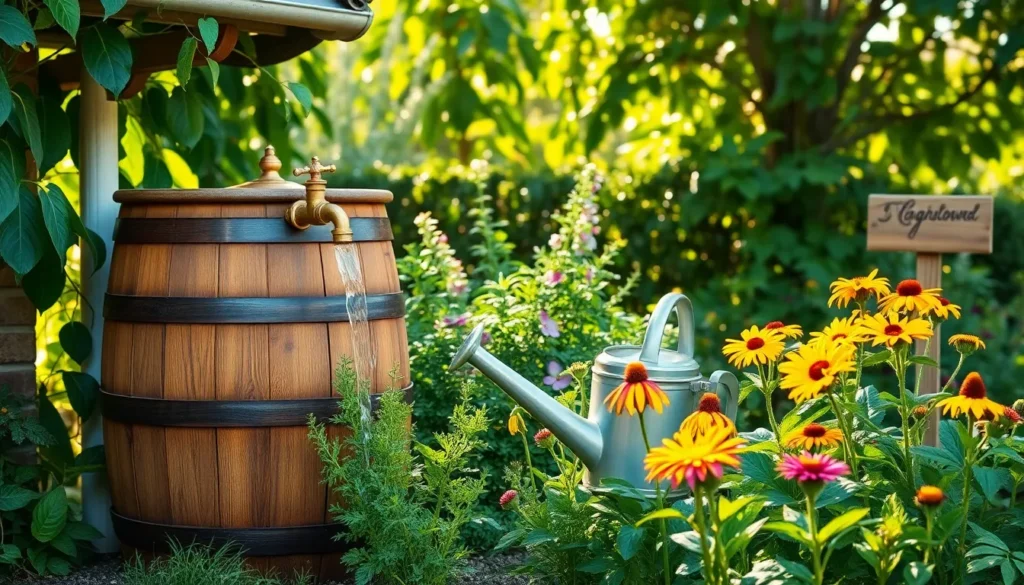Water is the lifeblood of any thriving garden, yet in many regions, it can be a scarce resource. Whether you’re a novice gardener just starting to dig your roots or a seasoned green thumb looking for sustainable practices, rainwater harvesting offers a practical and environmentally-friendly solution to keep your plants lush and lively. By capturing and utilizing the rain that nature freely provides, you can reduce your dependency on municipal water supplies, cut down on water bills, and contribute to a healthier planet.
In this article, we’ll explore six common methods of rainwater harvesting that cater to gardens of all sizes and styles. From simple rain barrels that fit snugly under your downspouts to more sophisticated systems that integrate seamlessly into your landscape, there’s an option for everyone. You’ll learn how to effectively collect, store, and utilize rainwater, ensuring your garden remains vibrant even during dry spells. Embrace the opportunity to make the most of every drop Mother Nature offers, enhancing both your garden’s vitality and your environmental stewardship.
Understanding Rainwater Harvesting Basics

Rainwater harvesting is a simple yet effective way to make the most of natural resources for your garden. By collecting and storing rainwater, you can reduce your dependency on municipal water supplies and save on water bills.
Start by setting up a basic rainwater collection system using a rain barrel. Position the barrel under a downspout to capture runoff from your roof, ensuring it has a secure lid to prevent debris and insects from entering.
For those looking to expand their system, consider connecting multiple barrels with a hose or installing a diverter. This allows you to maximize the amount of water collected without the need for large storage tanks.
Ensure your garden thrives by using harvested rainwater wisely. Use it for deep watering sessions, which encourages root growth, and apply it early in the morning or late in the evening to minimize evaporation.
Remember that different plants have varying water needs. For example, vegetables like tomatoes and peppers prefer consistent moisture, while succulents and cacti require less frequent watering.
Advanced gardeners might explore using rainwater in drip irrigation systems, which offer precise watering directly to plant roots. This method not only conserves water but also promotes healthier plant growth by reducing water stress.
Choosing Suitable Collection Systems
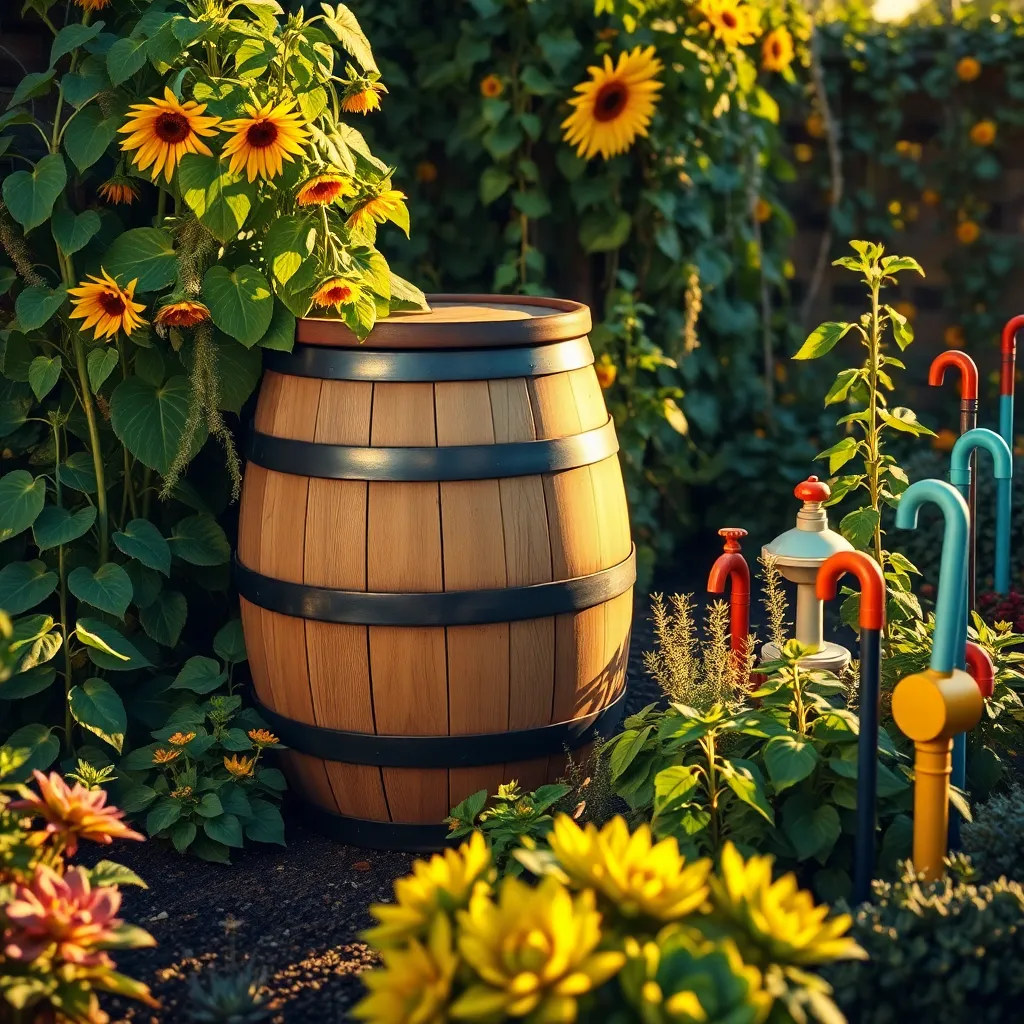
When choosing a rainwater collection system, it’s essential to consider the size of your garden and the average rainfall in your area. Smaller gardens might only require a basic barrel, while larger spaces may benefit from a more extensive cistern system.
Consider the material of the collection container, as this can impact water quality and durability. Plastic barrels are lightweight and resistant to rust, while metal tanks offer durability but may need a lining to prevent corrosion.
Placement of your collection system is crucial for efficiency and ease of use. Ensure that your collection system is positioned to capture the most runoff, typically under a downspout from your roof.
For gardeners seeking to maximize efficiency, installing a first flush diverter can greatly improve water quality by diverting the initial flow of water, which often contains debris. This simple addition ensures that the cleanest water is stored for your plants.
Installing Effective Water Storage Solutions
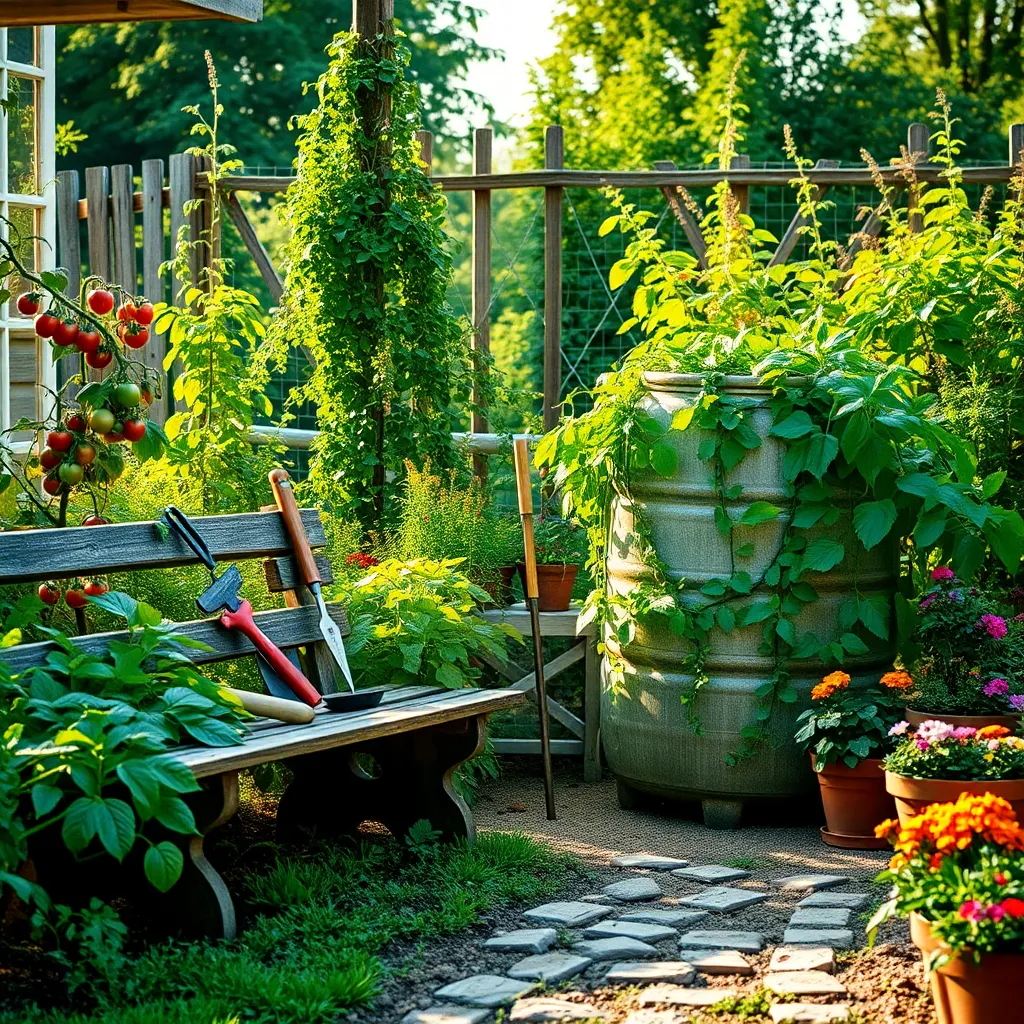
When installing effective water storage solutions, consider the size and type of your rainwater harvesting system tailored to your garden’s needs. Large rain barrels or cisterns are excellent for capturing significant amounts of water, while smaller systems might suffice for modest gardens.
Placement is crucial to maximize efficiency, so position your storage solution close to your collection system to minimize water travel. Ensure your storage containers are elevated slightly to allow for gravity-fed watering—a simple yet effective technique.
Investing in a filtration system will keep your stored rainwater clean, which is especially important if you plan to use it for edible plants. Filters can prevent debris and contaminants from entering your storage, ensuring safe water for your garden.
For those with more advanced setups, consider integrating a drip irrigation system directly from your storage container. This method allows for precise watering, conserving water and keeping your plants consistently hydrated—essential during dry spells.
Integrating Filtration for Garden Use
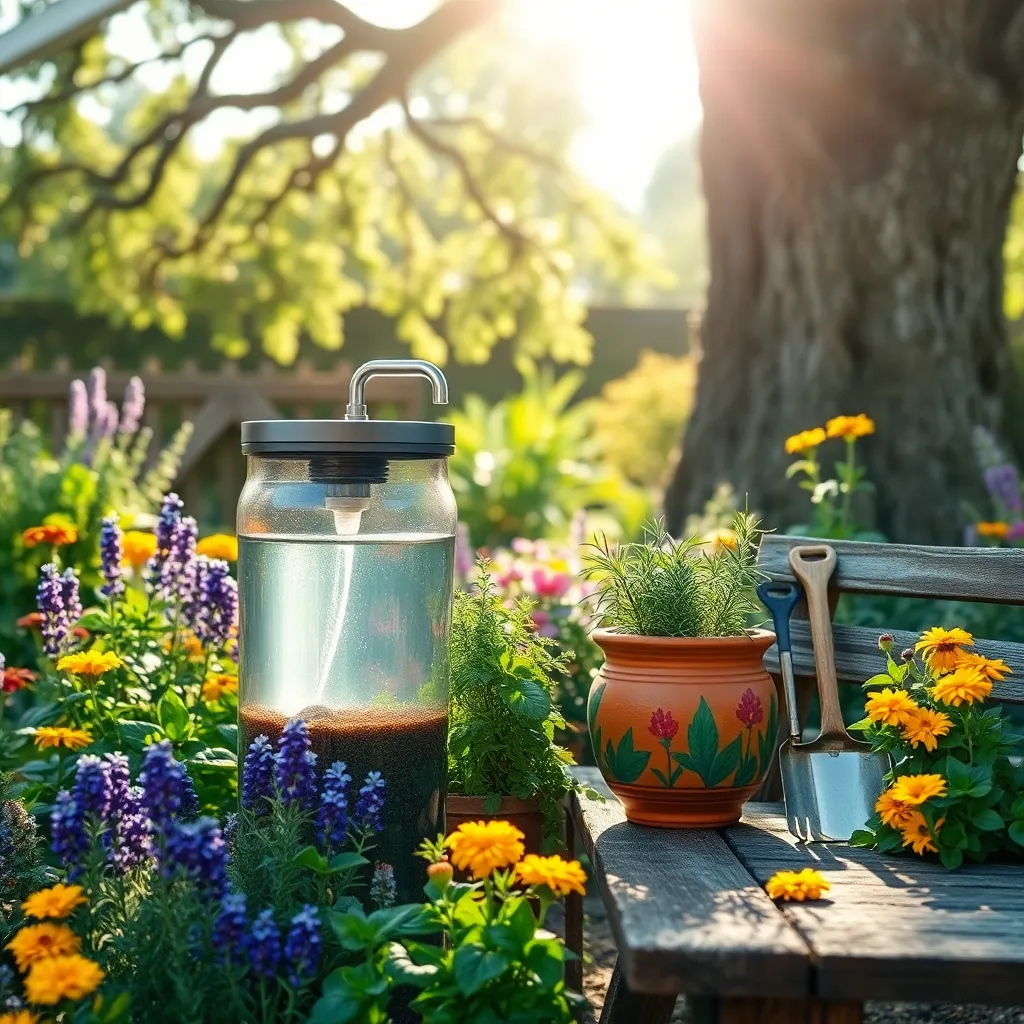
To optimize your rainwater harvesting system, integrating a filtration setup is essential. This ensures that the water collected is free from debris and contaminants, making it safer for your plants.
Consider installing a first-flush diverter, which is a simple device that directs the initial runoff away from your storage tanks. This initial rainfall often carries the most impurities from rooftops, ensuring cleaner water in your tanks.
Mesh filters can be placed at the entrances of your downspouts to catch larger debris like leaves and twigs. Regularly clean these filters to maintain their effectiveness and prevent water flow blockages.
For those looking to further enhance water quality, a sand or activated carbon filter can be installed before the water reaches your garden hoses. These filters help to remove finer particles and some chemical residues, which is particularly beneficial if you’re using rainwater for edible plants.
Optimizing Water Distribution Methods
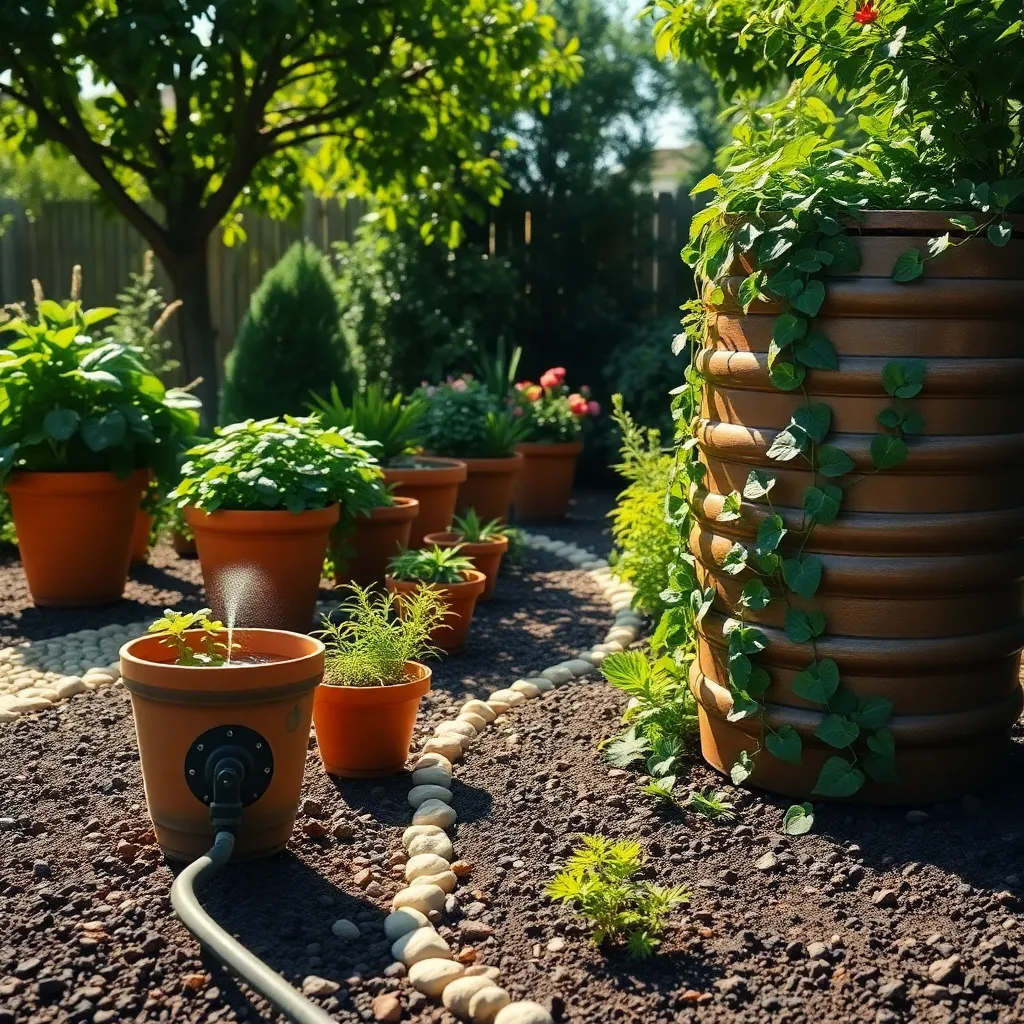
Optimizing water distribution methods in your garden ensures that all plants receive the right amount of moisture without wastage. Drip irrigation systems are an excellent choice, providing water directly to the roots, minimizing evaporation.
Investing in a timer for your irrigation system can greatly enhance efficiency and consistency. By setting watering schedules during early morning or late evening, you reduce water loss due to evaporation and ensure plants absorb the maximum moisture.
Mulching around plants is another effective way to conserve water and maintain consistent soil moisture levels. Organic mulches like straw or wood chips not only reduce evaporation but also add nutrients to the soil as they decompose.
For gardeners looking to use rainwater effectively, integrating gravity-fed systems can simplify the process. These systems rely on elevation differences to deliver water without the need for pumps, making them both efficient and energy-saving.
- Monitor soil moisture regularly to adjust watering schedules and prevent overwatering.
- Consider the specific needs of different plants—succulents, for example, require less water than vegetable gardens.
- Grouping plants with similar water needs can further optimize your watering strategy.
Gardeners aiming for sustainability should explore the use of smart irrigation controllers. These devices adjust watering based on weather conditions, ensuring plants receive the right amount at all times.
Maintaining Your Harvesting System
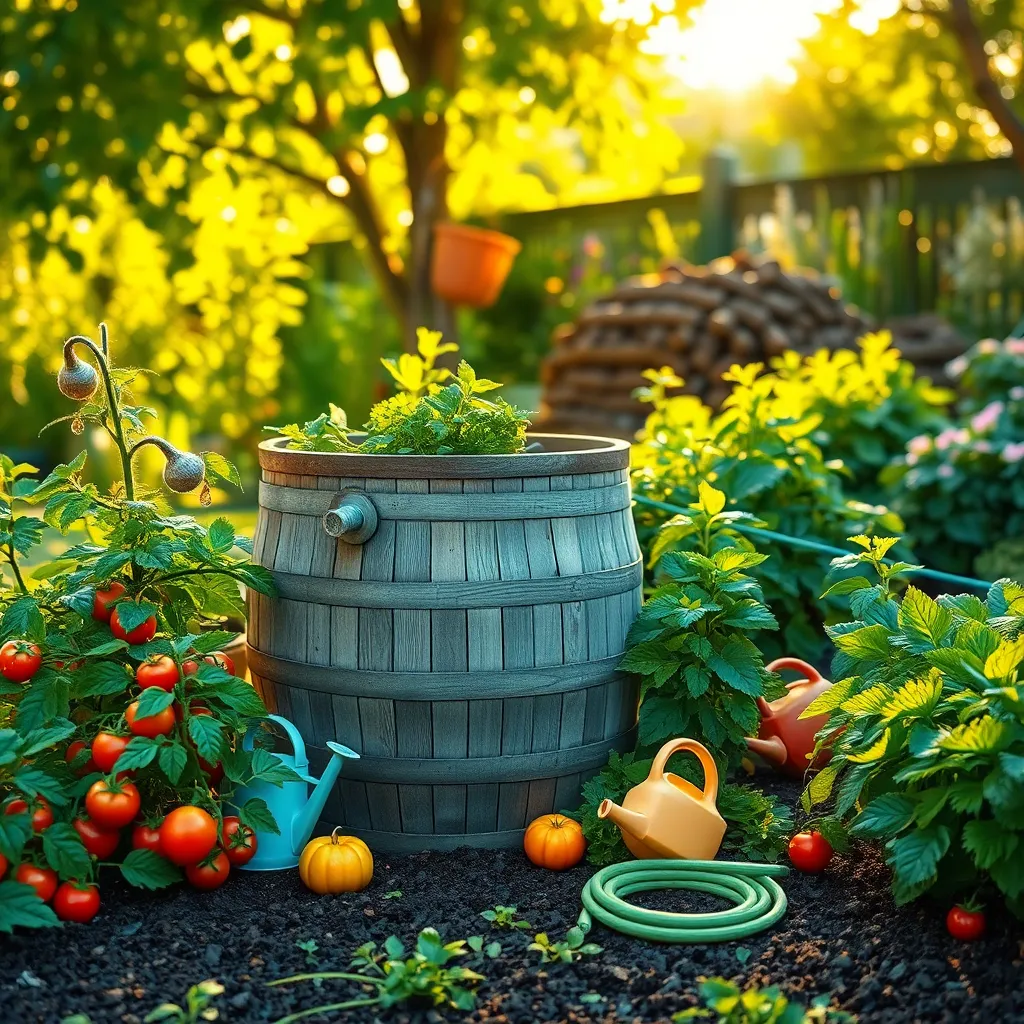
Maintaining your rainwater harvesting system is crucial for ensuring a consistent water supply to your garden. Regular maintenance prevents blockages and ensures that the system operates efficiently, providing your plants with the moisture they need.
Begin by inspecting your gutters and downspouts for any debris such as leaves or twigs. Cleaning them regularly will prevent clogs and ensure that water flows smoothly into your collection tanks or barrels.
It’s also important to check the storage tanks for any leaks or cracks. Small leaks can lead to significant water loss, so repairing them promptly with a waterproof sealant is advisable.
For those using a more advanced system, consider installing a first flush diverter. This device helps to remove the initial runoff, which might contain pollutants, ensuring that the water collected in your tanks is as clean as possible.
To keep the collected water usable for your plants, consider adding mosquito-proof mesh over the tank openings. This prevents mosquitoes from breeding in the water while allowing rain to enter freely.
Finally, regularly test the pH level of your stored rainwater, especially if you’re using it for sensitive plants. Adjusting the pH with lime or sulfur can create a more suitable growing environment for specific plant types.
Conclusion: Growing Success with These Plants
In exploring the six common rainwater harvesting methods for gardens, we delved into key concepts that can transform both your garden and your relationship with the environment. First, we looked at the simplicity and efficiency of rain barrels, followed by the elegance of rain gardens. Next, we explored the versatility of green roofs and the ingenuity of underground tanks. We also discussed the benefits of contour trenches and the innovative potential of permeable pavements. Each method offers unique advantages, much like the varied approaches we can take to nurture our personal relationships.
As an actionable next step, choose one method that resonates most with you and start implementing it in your garden. This small step can significantly impact your relationship with nature and inspire those around you.
Bookmark this article now to have these invaluable insights at your fingertips whenever you need a refresher or feel inspired to try another method.
Remember, just as a well-tended garden flourishes, your relationships can thrive with care and attention. By investing in these sustainable practices, you’re sowing seeds for a future full of growth, harmony, and success in your personal connections. Empower yourself today to make a lasting impact!

